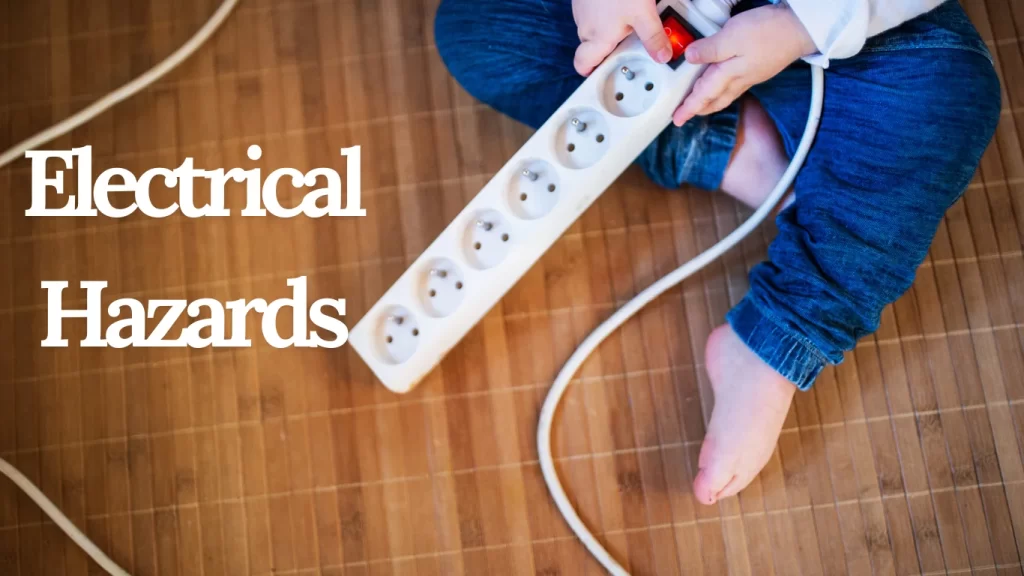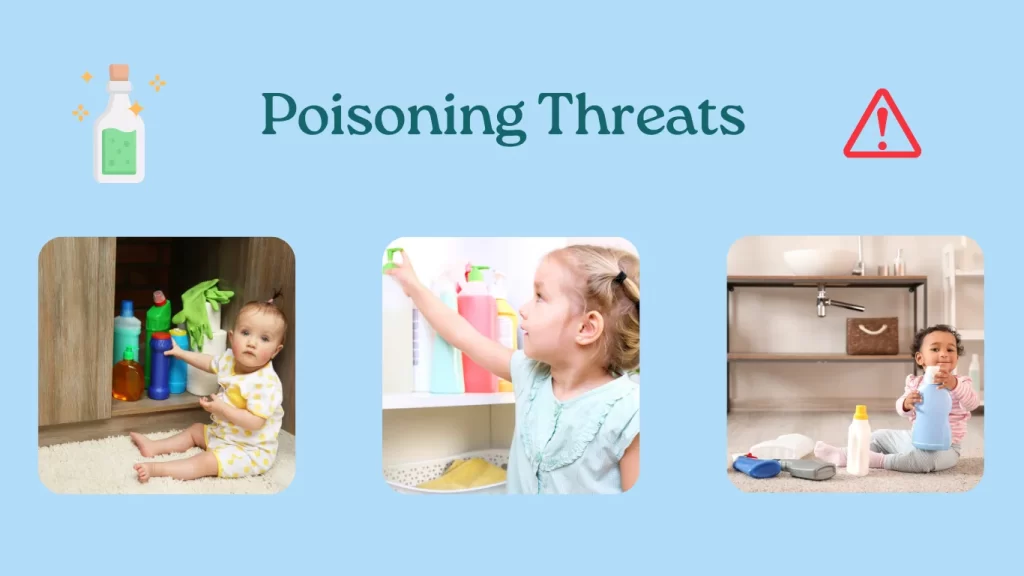Every corner of our homes has hidden dangers, posing risks we overlook until an accident happens. Paying attention to the common home hazards and how easily they can blend into our daily lives is the first step in preventing accidents that may lead to serious injuries or even worse. Our homes are our safe havens, yet without the proper knowledge and precautions, they can hold many hazards that pose risks to our safety and well-being.
In this article, we will review some of the hidden risks in the main areas of the house, from the kitchen to the living room, and highlight specific dangers that children and pets may face. We’ll explore hidden kitchen dangers, living room and furniture risks, and child and pet-specific hazards, offering home safety tips to help prevent accidents. Our goal is to give you the knowledge needed to identify and mitigate the hidden dangers in your home, ensuring a hazard-free environment for you and your loved ones.
Hidden Dangers in Kitchen Appliances
Dishwasher Safety
Dishwashers are convenient but can be dangerous if not used properly. Always load sharp items with points down and avoid overloading to prevent damage and ensure cleanliness. Dishwasher maintenance, such as checking for leaks and ensuring they are properly grounded, can help prevent fires.
Refrigerator Magnets
The dangers of small, powerful magnets are often overlooked. If swallowed by children, they can cause severe internal injuries. Ensure the magnets on your fridge are big enough. Always supervise children around appliances with magnets and store them out of reach if possible.
Burn Risks from Appliances
Burns from kitchen appliances like stoves and toasters are common but preventable. Never leave cooking unattended, and maintain a kid-free zone around the stove. Use backburners and turn pot handles away to prevent spills. Regular cleaning and maintenance of appliances reduce the risk of fires and burns.
Living Room and Furniture Risks
Tipping Furniture Household Risks
No one wants an accident in their home, especially from furniture like a chest of drawers tipping over, which can seriously injure both children and adults. To prevent such accidents, secure the furniture against the wall. Instability can be caused by uneven floors or by children using drawers as steps to reach higher objects. Simple preventive measures – for these home hazards – include using furniture restraints like L brackets or securing heavy objects lower in the furniture to avoid tip-overs.

Electrical home hazards, particularly electric cables, are a significant risk in the living room. It’s essential to handle these cables carefully; never touch them with wet hands, and ensure they are switched on and off properly to avoid accidents. Loose wires should be secured out of reach to prevent children or pets from pulling on them, which could lead to dangerous situations.
TV Safety
Securing televisions is crucial to preventing fatal tip-over accidents. To prevent flat-screen TVs from toppling from stands, it is recommended that they be mounted to the wall. For older, heavier TVs, ensure they are placed on low, stable furniture that can support their weight.
Child and Pet Specific Hazards
Small Objects and Toys
Small objects and toys are prevalent sources of choking hazards. Ensure toys are appropriate for the child’s age and do not contain small parts. Regularly inspect toys for loose parts and use a choke tube to test small objects. Keep potentially dangerous items like batteries secured and out of reach.

Many common houseplants are toxic and can cause severe health issues if ingested. Identify and remove or secure poisonous plants like philodendrons, peace lilies, and sago palms. Educate older children about the dangers and keep plants out of reach of young children and pets. Try to opt for non-toxic plant varieties.
Fire and Poisoning Threats
Common Fire Hazards
House fires can start from everyday activities such as cooking, which is the leading cause of such incidents. Never leave the kitchen unattended if there’s something cooking, and more importantly, keep flammable materials away from the heat.

A wide range of everyday household items can be toxic. Cleaning agents like bleach and detergents, personal care products such as cosmetics, and even certain houseplants can pose poisoning risks if ingested or improperly handled.
Preventative Measures for Parental Safety
Store all hazardous substances out of reach and in locked cabinets to avoid poisoning young children. Always keep products in their original containers to avoid confusion and clearly label them. Immediate action, such as contacting a Poison Information Centre, is crucial if exposure happens.
Conclusion – Common Home Hazards
Throughout this article, we’ve navigated the hidden dangers in the comfort of our homes, from the kitchen hazards to the overlooked hazards in living spaces, alongside the specific threats to children and pets. By shedding light on these household risks, we’ve understood the importance of preventive measures to help transform our living environments into the safe havens they are meant to be. Our exploration into the common fire and poisoning threats further emphasizes the need for awareness and preparedness in safeguarding our homes against potential accidents.
What common hazards at home can be found?
Numerous hazards can be found in a typical household, including fire risks, which can damage property and pose serious safety threats. Poisoning hazards from everyday items like cleaning supplies, medications, and fuels are common. Additionally, homes can have allergens, risks of water damage, fall hazards, choking hazards, risks from sharp objects, and potential burn injuries.
Can you provide an example of a hazard commonly identified in residential areas?
In homes, it’s essential to inspect for various hazards regularly. Examples include electrical dangers such as frayed cords or exposed wires, improperly stored chemicals that could be near heat sources or in reach of children, and fire risks like flammable materials stored near heat-producing electrical equipment or portable heaters too close to furniture.
What are some typical hazards and risks found in workplace environments?
In the workplace, common hazards include physical risks like frayed electrical cords, unguarded machinery with exposed moving parts, and the dangers associated with working from heights such as ladders or scaffolding. These hazards can be encountered frequently depending on the nature of the work environment.
What are considered the top hazards in various environments?
The significant hazards often prioritized in safety assessments include falls and falling objects, exposure to harmful chemicals, fire hazards, electrical dangers, and injuries related to repetitive motions. These are critical to ensure safety in home and workplace settings.





